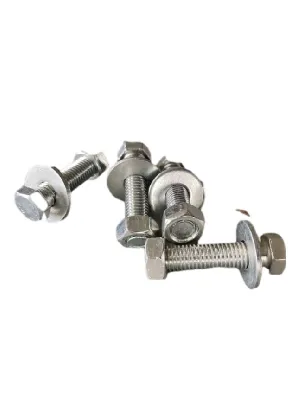loading...
- No. 9, Xingyuan South Street, Dongwaihuan Road, Zaoqiang County, Hengshui, Hebei, China
- admin@zjcomposites.com
- +86 15097380338
- Welcome to visit our website!
Exploring the Benefits and Applications of FRP Sheet Piling Systems
Introduction to FRP Sheet Piling
In the world of civil engineering and construction, the demand for innovative and sustainable materials is ever-increasing. One such advancement is the use of Fiber Reinforced Polymer (FRP) sheet piling. This material is not only revolutionizing the way we approach retaining walls and waterfront structures but also offering environmental benefits that traditional materials cannot match. In this article, we will explore the characteristics, advantages, applications, and future potential of FRP sheet piling.
Characteristics of FRP Sheet Piling
FRP sheet piling is composed of a composite of fibers—usually glass, carbon, or aramid—embedded within a polymer matrix. This unique construction provides several key characteristics that set it apart from traditional materials like steel and concrete
1. Corrosion Resistance Unlike steel, FRP does not corrode, making it an excellent choice for marine and contaminated environments. 2. Lightweight FRP sheet piles are significantly lighter than their steel counterparts, which allows for easier handling, transportation, and installation.
3. High Strength-to-Weight Ratio Despite being lightweight, FRP offers a remarkable strength-to-weight ratio that makes it appropriate for a variety of structural applications.
4. Flexibility in Design FRP can be molded into diverse shapes and sizes, providing immense flexibility in structural design.
5. Longevity With a life span that can exceed 50 years in harsh environments, FRP sheet piling presents a long-term solution for construction projects.
Advantages of FRP Sheet Piling
The benefits of using FRP sheet piling extend beyond its physical properties. Here are some of the key advantages that make it an ideal choice for modern construction projects
1. Cost Effectiveness While the initial material cost may be higher than traditional options, the long-term savings in maintenance and replacement costs make FRP a more economical choice over time.
2. Ease of Installation The lightweight nature of FRP allows for reduced labor and machinery costs during installation, translating to lower overall project costs.
3. Environmental Sustainability Given its long life span and low maintenance needs, FRP sheet piling contributes positively to sustainable construction practices. Its production processes typically generate less waste and pollution than those for steel or concrete.
frp sheet piling

4. Rapid Installation FRP sheet piles can be installed quickly, reducing the overall construction time, which is advantageous for projects with tight deadlines.
5. Aesthetic Appeal Available in various colors and finishes, FRP can enhance the visual appeal of structures, making it a desirable choice for aesthetic-sensitive applications.
Applications of FRP Sheet Piling
The versatility of FRP sheet piling allows it to be used in a broad range of applications. Some common uses include
1. Marine Structures FRP sheet piling is ideal for wharves, docks, and seawalls due to its resistance to saltwater corrosion.
2. Retaining Walls Its strength and durability make it suitable for various types of retaining walls in both urban and rural contexts.
3. Flood Protection Systems With increasing concerns about flooding, FRP sheet piling serves as an effective barrier against floodwaters.
4. Landfill Projects The corrosion resistance of FRP makes it a good choice for landfill containment structures.
5. Bank Stabilization FRP can be used to stabilize riverbanks and shorelines, helping prevent erosion.
Future Potential
As the construction industry continues to evolve, the potential for FRP sheet piling is vast. Ongoing research and development are expected to enhance the material’s properties, making it even more effective in various applications. Additionally, as society becomes increasingly focused on sustainability, the demand for eco-friendly construction materials, such as FRP, is likely to rise.
Conclusion
FRP sheet piling represents a significant advancement in construction materials. With its numerous advantages, including durability, corrosion resistance, and ease of installation, it stands out as an innovative solution to traditional challenges in civil engineering. As we look to the future, it is clear that FRP sheet piling will play an important role in creating resilient and sustainable infrastructure that meets the needs of our growing population while minimizing environmental impact. Whether for waterfront developments, flood protection, or any number of civil engineering applications, FRP sheet piling exemplifies the future of construction.
-
Transform Your Spaces with FRP Grating SolutionsNewsNov.04,2024
-
The Versatility and Strength of FRP RodsNewsNov.04,2024
-
The Excellence of Fiberglass Water TanksNewsNov.04,2024
-
The Benefits of FRP Grating for Your ProjectsNewsNov.04,2024
-
Elevate Your Efficiency with FRP Pressure VesselsNewsNov.04,2024
-
Welcome to the World of FRP Pressure VesselsNewsOct.12,2024
-
Unveiling the Future of Filtration: Why FRP Filter Vessels are a Game ChangerNewsOct.12,2024
